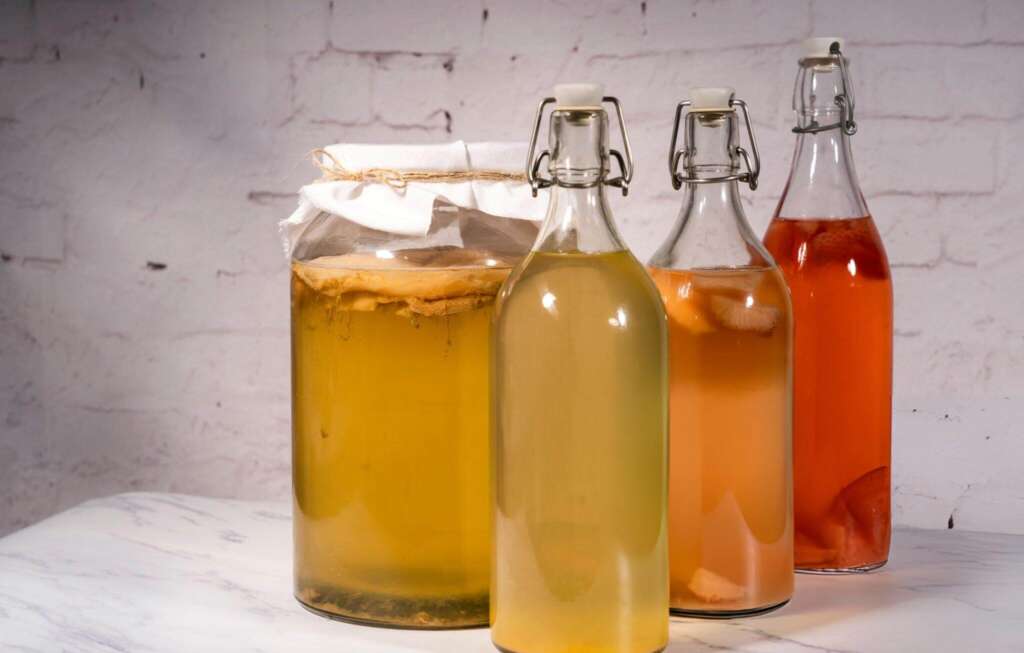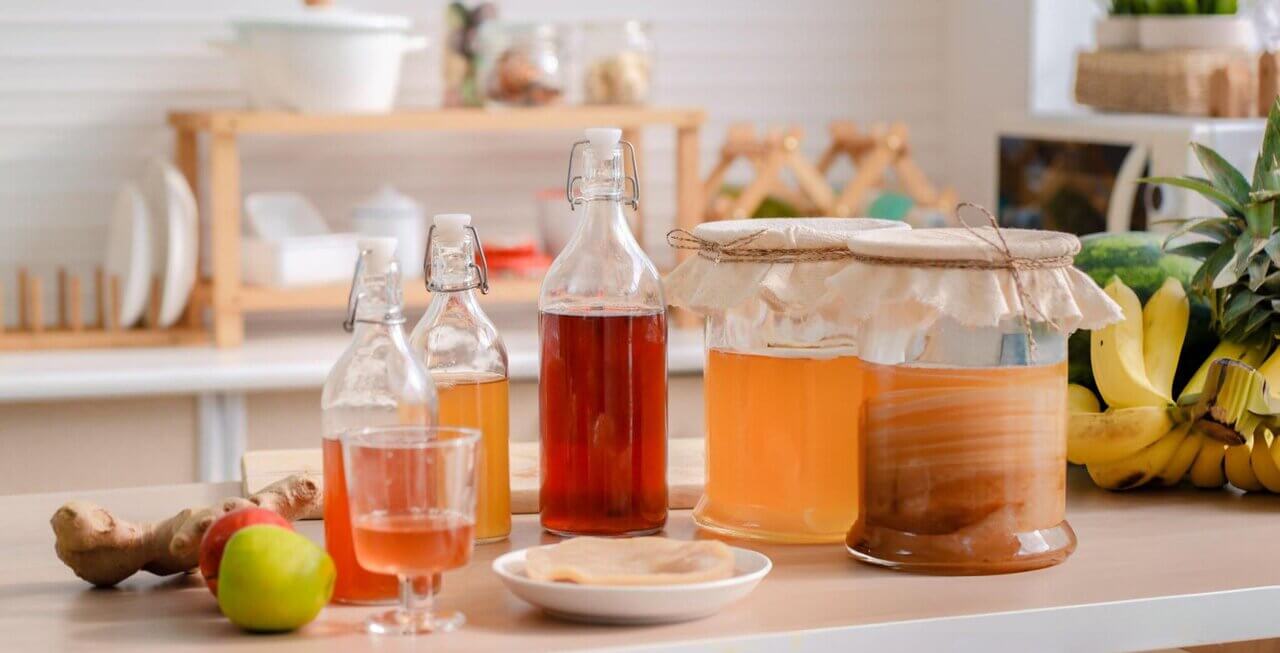Hey there, science explorers! Today we’re gonna dive into something super cool that happens all around us, even though we can’t see it with our eyes. It’s called alcoholic fermentation. Don’t worry if that sounds like a big fancy word – by the time we’re done, you’ll be an expert on it!
What in the World is Alcoholic Fermentation?
Okay, first things first – let’s break down what alcoholic fermentation actually is. It’s a process where teeny tiny living things called yeast eat sugar and turn it into alcohol and a gas called carbon dioxide. Pretty neat, huh?
This process is mega important for making tons of yummy things we love to eat and drink. Stuff like bread, wine, and beer all need alcoholic fermentation to be made. Without it, our world would be way less tasty!
The Yeast Beast Feast
Now, let’s talk about these little yeast guys. They’re not like the animals we can see – they’re so small we need special tools to even know they’re there! But boy oh boy, do they love to eat. And their favorite food? Sugar!
When yeast eat sugar, they don’t just gobble it up and be done with it. Nope, they do something pretty magical. They change the sugar into two new things:
1. Alcohol (the stuff that makes grown-ups act silly sometimes)
2. Carbon dioxide (the bubbly gas that makes soda fizzy)
It’s like the yeast are tiny chefs, cooking up new ingredients!
Why Do We Care About This Yeasty Business?
You might be thinking, “Okay, so some tiny things eat sugar and make alcohol. So what?” Well, let me tell you – this process is a big deal! Here’s why:It Makes Bread Rise
Ever wonder why bread is soft and fluffy instead of hard like a rock? That’s thanks to our little yeast friends! When we make bread, we mix yeast into the dough. As the yeast eat the sugars in the flour, they make carbon dioxide gas. This gas makes little bubbles in the dough, which makes the bread rise and get all puffy.
It Makes Drinks Bubbly
Remember how we said yeast make carbon dioxide? Well, that’s what makes some drinks fizzy! In stuff like beer and sparkling wine, the bubbles you see are actually tiny bits of carbon dioxide gas made by yeast. Cool, right?
It Makes Alcohol
This one’s for the grown-ups, but it’s still important to know about. The alcohol in drinks like beer and wine? Yep, you guessed it – that comes from yeast too! As they eat sugar, they make alcohol as a kind of waste product. Gross to think about maybe, but it’s how we’ve been making these drinks for thousands of years!
The Science Behind the Magic
Okay, now let’s put on our scientist hats and look at how this all works a bit closer. Don’t worry – we’ll keep it simple!
Step 1: Breaking Down Sugar
First, the yeast have to break down the sugar they eat. They do this using special helper things called enzymes. It’s kind of like how we use teeth to break down our food, but on a much tinier scale.
Step 2: Making New Stuff
Once the sugar is broken down, the yeast cells start to make new things from it. They shuffle around the bits that made up the sugar and turn them into alcohol and carbon dioxide. It’s like they’re playing with building blocks, taking apart one thing to make two new things!
Step 3: Releasing the Products
Finally, the yeast let go of the alcohol and carbon dioxide they made. The alcohol mixes into whatever liquid the yeast are in (like grape juice for wine), and the carbon dioxide bubbles up as gas.
Fermentation in Action: Making Bread
Let’s look at how this works in something we eat all the time – bread! Here’s what happens when we make bread:
1. We mix flour, water, and yeast together to make dough.
2. The yeast wake up and start to eat the sugars in the flour.
3. As they eat, they make carbon dioxide gas, which gets trapped in the dough.
4. The gas makes little bubbles, which make the dough rise and get bigger.
5. When we bake the bread, the heat makes the bubbles get even bigger, and then it hardens the dough around them.
6. The result? Soft, fluffy bread with lots of little air pockets inside!

Fermentation in Action: Making Wine
Now let’s look at how fermentation works to make something for grown-ups – wine!
1. Grapes are squished to make grape juice.
2. Yeast (either added or naturally present on the grape skins) starts to eat the sugar in the juice.
3. As the yeast eat, they make alcohol and carbon dioxide.
4. The carbon dioxide bubbles away into the air.
5. The alcohol stays in the liquid, turning it from grape juice into wine.
6. After a while, when most of the sugar is gone, the yeast stop working.
7. The wine is then aged and bottled.
The History of Fermentation
Believe it or not, people have been using fermentation for thousands and thousands of years! Way back before we even knew what yeast was, ancient people figured out how to use this process to make food and drinks.
Ancient Egypt
The ancient Egyptians were big fans of bread and beer. They figured out that if they let bread dough sit out for a while before baking, it would rise and make better bread. They also made beer by letting barley bread soak in water until it started to bubble. They didn’t know it, but they were using yeast to make both these things!
Ancient China
In China, people have been making fermented foods for over 9,000 years! They made things like rice wine and fermented soybeans. These foods were important not just for eating, but also for medicine.
Medieval Europe
During the Middle Ages in Europe, monks in monasteries became experts at brewing beer. They made beer not just to drink, but also as a way to have safe water (because the alcohol killed germs) and to have food during fasting times.
Fermentation Around the World
Alcoholic fermentation isn’t just used in one or two places – it’s used all over the world to make all kinds of yummy foods and drinks! Let’s take a little trip around the globe to see some examples:
Japan: Sake
In Japan, they make a special drink called sake. It’s made by fermenting rice! They use a type of mold along with yeast to break down the rice and turn it into a tasty alcoholic drink.
Mexico: Pulque
Pulque is an ancient Mexican drink made from the sap of agave plants. It’s fermented using natural yeasts until it becomes a bit alcoholic and very bubbly.
Ethiopia: Injera
Injera is a type of flatbread eaten in Ethiopia. It’s made from a grain called teff, and it’s fermented for several days before cooking. This fermentation gives it a unique sour taste.
India: Dosa
Dosa is a crispy, savory pancake from South India. The batter is made from rice and lentils and is fermented overnight before being cooked. This fermentation gives dosa its special tangy flavor.
Germany: Sauerkraut
While sauerkraut is another example of fermentation. It’s made by fermenting finely cut cabbage. The process uses different microbes than yeast, but it’s still a type of fermentation!
The Science of Yeast
Now that we know what yeast do, let’s learn a bit more about these tiny heroes of fermentation!
What is Yeast?
Yeast are teeny tiny living things called microorganisms. They’re so small that millions of them could fit on the head of a pin! But don’t let their size fool you – they’re pretty amazing.
Types of Yeast
There are lots of different types of yeast out there, but the one we use most for making food and drinks is called Saccharomyces cerevisiae. That’s a real mouthful to say! Scientists call it S. cerevisiae for short.
How Yeast Grow
Yeast can grow and make more yeast in two ways:
1. Budding: This is when a little bud grows on the side of a yeast cell and then breaks off to become a new yeast cell.
2. Spores: Sometimes yeast can make tough little packages called spores that can survive harsh conditions and grow into new yeast when things get better.
What Yeast Need to Be Happy
Like all living things, yeast need certain things to live and grow:
– Food: Yeast love to eat sugar, but they can also munch on other types of carbohydrates.
– Water: Just like us, yeast need water to live.
– Warm temperature: Yeast like it warm, but not too hot. They work best at temperatures between 20°C and 30°C (68°F to 86°F).
– Oxygen: At first, yeast need oxygen to grow and multiply. But once they start fermenting, they can live without it.
Fermentation Gone Wrong
Most of the time, fermentation goes just the way we want it to. But sometimes, things can go a bit wonky. Let’s look at some fermentation fails:
Bread That Won’t Rise
Sometimes, bread dough just sits there like a lump and refuses to rise. This can happen if:
– The yeast is too old and not alive anymore
– The water used was too hot and killed the yeast
– There’s not enough food (sugar) for the yeast to eat
Wine Turning to Vinegar
If wine is left open to the air for too long, it can turn into vinegar. This happens because different microbes get into the wine and do a different kind of fermentation. It’s not bad – in fact, this is how we make vinegar on purpose! But it’s not so great if you wanted wine.
Exploding Bottles
Sometimes, if there’s still a lot of sugar left when we bottle fermented drinks, the yeast might keep working. This can build up so much carbon dioxide that the bottle explodes! That’s why it’s important to make sure fermentation is finished before bottling.
The Future of Fermentation
Fermentation might be an ancient process, but scientists are still finding new and exciting ways to use it! Here are some cool things happening in the world of fermentation:
Making Fuel
Some smart folks have figured out how to use yeast to make fuel for cars! Instead of fermenting to make alcohol for drinking, the yeast make alcohol that can be used as fuel. This could help us have cleaner energy in the future.
Growing Meat
This might sound weird, but scientists are working on ways to grow meat in labs using fermentation! They use microbes to help grow animal cells into meat, without needing a whole animal. It could be a way to make meat that’s better for the environment.
Making Medicine
Fermentation isn’t just for food and drinks – it’s also used to make some medicines! Scientists use special types of yeast and bacteria to make things like insulin for people with diabetes.
Creating New Flavors
Food scientists are always looking for new and exciting flavors. They’re using fermentation to create all sorts of new tastes that we’ve never had before!
Fun Fermentation Experiments You Can Try at Home
Want to see fermentation in action? Here are some safe and fun experiments you can try at home with a grown-up’s help:
Make Your Own Soda
You’ll need:
– A clean plastic bottle
– 1 cup of fruit juice
– 1/4 teaspoon of active dry yeast
– 1 teaspoon of sugar
What to do:
1. Pour the juice into the bottle.
2. Add the sugar and yeast.
3. Put the cap on tightly and shake gently to mix.
4. Leave the bottle in a warm place for 24-48 hours.
5. When the bottle feels hard, it’s ready! Chill it in the fridge before opening – and open it carefully over a sink!
Blow Up a Balloon with Yeast
You’ll need:
– A clean, empty plastic bottle
– 1 packet of active dry yeast
– 1 teaspoon of sugar
– Some warm water
– A balloon
What to do:
1. Fill the bottle about 1/3 full with warm water.
2. Add the yeast and sugar, then shake gently to mix.
3. Stretch the balloon over the mouth of the bottle.
4. Leave it in a warm place and watch what happens!
The yeast will eat the sugar and make carbon dioxide, which will blow up the balloon!
FAQs:
What is the main chemical reaction in alcoholic fermentation?
The main reaction in alcoholic fermentation is the conversion of glucose (sugar) into ethanol (alcohol) and carbon dioxide. This can be summarized by the equation: C6H12O6 → 2 C2H5OH + 2 CO2.
What role does yeast play in alcoholic fermentation?
Yeast is crucial in alcoholic fermentation. These single-celled organisms consume sugar and, in the absence of oxygen, convert it into alcohol and carbon dioxide. The most common yeast used is Saccharomyces cerevisiae.
How does temperature affect the fermentation process?
Temperature significantly impacts fermentation. Most yeast strains work best between 20-30°C (68-86°F). Higher temperatures speed up fermentation but can produce off-flavors, while lower temperatures slow the process but often result in cleaner flavors.
Can alcoholic fermentation occur without sugar?
No, alcoholic fermentation requires sugar as the primary substrate. Without sugar, yeast cannot produce alcohol. The sugar can come from various sources like fruits, grains, or added sugar.
How long does the alcoholic fermentation process typically take?
The duration of alcoholic fermentation can vary widely depending on the product being made, the yeast strain, and environmental conditions. It can range from a few days for some beers to several weeks or even months for certain wines.
Wrapping It Up
Wow, we’ve learned a lot about alcoholic fermentation! Let’s recap the main points:
– Alcoholic fermentation is when yeast eat sugar and turn it into alcohol and carbon dioxide.
– This process is super important for making things like bread, wine, and beer.
– Yeast are tiny living things that have been helping humans make food and drinks for thousands of years.
– Fermentation happens all over the world and is used to make all sorts of different foods and drinks.
– Scientists are finding new ways to use fermentation, from making fuel to growing meat!
Next time you bite into a piece of bread or see a grown-up drinking a glass of wine, you’ll know there’s a whole world of tiny yeast working hard to make it happen. Pretty cool, right?
Remember, fermentation is a natural process that’s been happening for millions of years, long before humans figured out how to use it. It’s just one of the many amazing ways that nature works to change one thing into another.
So, the next time someone asks you, “What actually happens during alcoholic fermentation?”, you can tell them all about the fascinating world of yeast and how they turn sugar into bubbles and alcohol. You’re now a fermentation expert!
Keep exploring, keep asking questions, and who knows? Maybe one day you’ll be a scientist working on the next big thing in fermentation. The world of science is full of amazing discoveries waiting to be made, and it all starts with being curious about the world around us.



